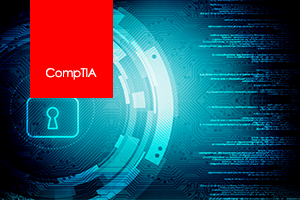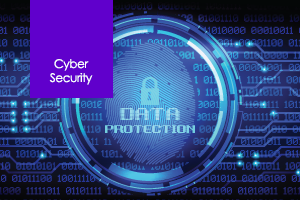
26 Hours |
|
217 Course Videos |
|
249 Test Questions |
This highly hands-on course gives participants experience in network and system penetration testing. It covers all of the exam objectives for the PT0-001 exam while taking the learner step-by-step through hacking and exploiting each network and system type. Tools used in the activities are mostly Kali Linux-based, covering a broad range of real-world examples used by penetration testers and red teams. The PenTest+ certification is a much-sought-after security certification offered by CompTIA. It is the final step in achieving the new CompTIA Network Vulnerability Assessment Professional (CNVP) or Network Security Professional (CNSP) stackable certification.
It is also an intermediary step in achieving the CompTIA Security Infrastructure Expert (CSIE) top level certification. In this course you will learn hands-on penetration testing and hacking skills including: - Client engagement and documentation - Passive and active reconnaissance - Windows, Linux, and mobile device system hacking - Physical security testing and social engineering - Wired and wireless network hacking and exploitation - Network service hacking and exploitation - Application and web app hacking and exploitation - Lateral movement and persistence in a compromised network - Covering your tracks - Report writing and post-test cleanup This course is intended for advanced students and cybersecurity practitioners who will actively test networks and computer systems for vulnerabilities. Successful completion of two pre-requisite courses, Network+ and Security+, is highly recommended.
- Intro
- PenTest+
- 1.1 PenTest Plus Topics
- 1.2 PenTest Engagement
- 1.3 Threat Modeling
- 1.4 Technical Constraints
- 1.5 PenTest Engagement Review
- 1.6 Examining PenTest Engagement Documents Act
- 2.1 Passive Reconnaissance part1
- 2.2 WHOIS Act
- 2.3 Passive Reconnaissance part2
- 2.4 Google Hacking Act
- 2.5 Passive Reconnaissance part3
- 2.6 DNS Querying Act
- 2.7 Passive Reconnaissance part4
- 2.8 Email Server Querying Act
- 2.9 SSL-TLS Cerfificates
- 2.10 Shodan Act
- 2.11 The Havester
- 2.12 TheHarvester Act
- 2.13 Recon-ng
- 2.14 Recon-g Act
- 2.14 Recon-ng-Part-2-API-key Act
- 2.15 Maltego
- 2.16 Have I been Pwned
- 2.17 Punked and Owned Pwned Act
- 2.18 Fingerprinting Organization with Collected Archives
- 2.19 FOCA Act
- 2.20 Findings Analysis Weaponization
- 2.21 Chp 2 Review
- 3.1 Active Reconnaissannce
- 3.2 Discovery Scans Act
- 3.3 Nmap
- 3.4 Nmap Scans Types Act
- 3.5 Nmap Options
- 3.6 Nmap Options Act
- 3.7 Stealth Scans
- 3.8 Nmap Stealth Scans Act
- 3.9 Full Scans
- 3.10 Full Scans Act
- 3.11 Packet Crafting
- 3.12 Packet Crafting Act
- 3.13 Network Mapping
- 3.14 Metasploit
- 3.15 Scanning with Metasploit Act
- 3.16 Enumeration
- 3.17 Banner Grabbing Act
- 3.18 Windows Host Enumeration
- 3.19 Winddows Host Enumeration Act
- 3.20 Linux Host Enumeration
- 3.21 Linux Host Enumeration Act
- 3.22 Service Enumeration
- 3.23 Service Enumeration Act
- 3.24 Network Shares
- 3.25 SMB Share Enumeration Act
- 3.26 NFS Network Share Enumeration
- 3.27 NFS Share Enumeration Act
- 3.28 Null Sessions
- 3.29 Null Sessions Act
- 3.30 Website Enumeration
- 3.31 Website Enumeration Act
- 3.32 Vulnerability Scans
- 3.33 Compliance Scans Act
- 3.34 Credentialed Non-credentialed Scans
- 3.35 Using Credentials in Scans Act
- 3.36 Server Service Vulnerability Scan
- 3.37 Vulnerability Scanning Act
- 3.38 Web Server Database Vulnerability Scan
- 3.39 SQL Vulnerability Scanning Act
- 3.40 Vulnerability Scan Part 2 OpenVAS Act
- 3.41 Web App Vulnerability Scan
- 3.42 Web App Vulnerability Scanning Act
- 3.43 Network Device Vulnerability Scan
- 3.44 Network Device Vuln Scanning Act
- 3.45 Nmap Scripts
- 3.46 Using Nmap Scripts for Vuln Scanning Act
- 3.47 Packet Crafting for Vulnerbility Scans
- 3.48 Firewall Vulnerability Scans
- 3.49 Wireless Access Point Vunerability
- 3.50 Wireless AP Scans Act
- 3.51 WAP Vulnerability Scans
- 3.52 Container Security issues
- 3.53 How to Update Metasploit Pro Expired Trial License
- 4.1 Physical Security
- 4.2 Badge Cloning Act
- 4.3 Physical Security Review
- 5.1 Social Engineering
- 5.2 Using Baited USB Stick Act
- 5.3 Using Social Enginnering to Assist Attacks
- 5.4 Phishing Act
- 5.5 Social Engineering Review
- 6.1 Vulnerbility Scan Analysis
- 6.2 Validating Vulnerability Scan Results Act
- 6.3 Vulnerbility Scan Analysis Review
- 7.1 Password Cracking
- 7.2 Brute Force Attack Against Network Service Act
- 7.3 Network Authentication Interception Attack
- 7.4 Intercepting Network Authentication Act
- 7.5 Pass the Hash Attacks
- 7.6 Pass the Hash Act
- 7.7 Password Cracking Review
- 8.1 Penetrating Wired Network
- 8.2 Sniffing Act
- 8.3 Eavesdropping
- 8.4 Eavesdropping Act
- 8.5 ARP Poisoning
- 8.6 ARP Poisoning Act
- 8.7 Man In The Middle
- 8.8 MITM Act
- 8.9 TCP Session HiJacking
- 8.10 Server Message Blocks SMB Exploits
- 8.11 SMB Attack Act
- 8.12 Web Server Attacks
- 8.13 FTP Attacks
- 8.14 Telnet Server Attacks
- 8.15 SSH Server Attacks
- 8.16 Simple Network Mgmt Protocol SNMP
- 8.17 Simple Mail Transfer Protocol SMTP
- 8.18 Domain Name System DNS Cache Poisoning
- 8.19 Denail of Service Attack DoS-DDoS
- 8.20 DoS Attack Act
- 8.21 VLAN Hopping Review
- 9.1 Penetrating Wireless Networks
- 9.2 Jamming Act
- 9.3 Wireless Sniffing
- 9.4 Replay Attacks
- 9.5 WEP Cracking Act
- 9.6 WPA-WPA2 Cracking
- 9.7 WAP Cracking Act
- 9.8 Evil Twin Attacks
- 9.9 Evil Twin Attack Act
- 9.10 WiFi Protected Setup
- 9.11 Bluetooth Attacks
- 9.12 Penetrating Wireless Networks
- 10.1 Windows Exploits
- 10.2 Dumping Stored Passwords Act
- 10.3 Dictionary Attacks
- 10.4 Dictionary Attack Against Windows Act
- 10.5 Rainbow Table Attacks
- 10.6 Credential Brute Force Attacks
- 10.7 Keylogging Attack Act
- 10.8 Windows Kernel
- 10.9 Kernel Attack Act
- 10.10 Windows Components
- 10.11 Memory Vulnerabilities
- 10.12 Buffer Overflow Attack Act
- 10.13 Privilegde Escalation in Windows
- 10.14 Windows Accounts
- 10.15 Net and WMIC Commands
- 10.16 Sandboxes
- 11.1 Linux Exploits
- 11.2 Exploiting Common Linux Features Act
- 11.3 Password Cracking in Linux
- 11.4 Cracking Linux Passwords Act
- 11.5 Vulnerability Linux
- 11.6 Priviledge Escalation Linux
- 11.7 Linux Accounts
- 11.8 Linux Exploits Review
- 12.1 Mobile Devices
- 12.2 Hacking Android Act
- 12.3 Apple Exploits
- 12.4 Moblie Devices Review
- 13.1 Specialized Systems
- 13.2 Specialized Systems Review
- 14.1 Scripts
- 14.2 Powershell
- 14.3 Python
- 14.4 Ruby
- 14.5 Common Scripting Elements
- 14.6 Scripts Review
- 14.7 Better Ping Sweep
- 14.8 Simple Port Scanner2
- 14.9 Multitarget Port Scanner
- 14.10 Port Scanner with Nmap
- 14.11 Scripts Review
- 15.1 Application Testing
- 15.2 Reverse Engineering
- 16.1 Webb App Exploits
- 16.2 Injection Attacks
- 16.3 HTML Injection
- 16.4 SQL Hacking - SQLmap Act
- 16.5 Cross-Site Attacks
- 16.6 Cross-Site Request Forgery
- 16.7 Other Web-based Attacks
- 16.8 File Inclusion Attacks
- 16.9 Web Shells
- 16.10 Web Shells Review
- 17.1 Lateral Movement
- 17.2 Lateral Movement with Remote Mgmt Services
- 17.3 Process Migration Act
- 17.4 Passing Control Act
- 17.5 Pivoting
- 17.6 Tools the Enable Pivoting
- 17.7 Lateral Movement Review
- 18.1 Persistence
- 18.2 Breeding RATS Act
- 18.3 Bind and Reverse Shells
- 18.4 Bind Shells Act
- 18.5 Reverse Shells
- 18.6 Reverse Shells Act
- 18.7 Netcat
- 18.8 Netcat Act
- 18.9 Scheduled Tasks
- 18.10 Scheduled Tasks Act
- 18.11 Services and Domains
- 18.12 Persistence Review
- 19.1 Cover Your Tracks
- 19.2 Cover Your Tracks - Timestomp Files Act
- 19.3 Cover Your Tracks - Frame the Administrator Act
- 19.4 Cover Your Tracks - Clear the Event Log Act
- 19.5 Cover Your Tracks Review
- 20.1 The Report
- 20.2 The Report Review
- 21.1 Post Engagement Cleanup
- 21.1 Post Engagement Cleanup_1
- 21.3 Post Engagement Cleanup Review
- 21.4 PenTest Plus Conclusion
Description
This highly hands-on course gives participants experience in network and system penetration testing. It covers all of the exam objectives for the PT0-001 exam while taking the learner step-by-step through hacking and exploiting each network and system type. Tools used in the activities are mostly Kali Linux-based, covering a broad range of real-world examples used by penetration testers and red teams. The PenTest+ certification is a much-sought-after security certification offered by CompTIA. It is the final step in achieving the new CompTIA Network Vulnerability Assessment Professional (CNVP) or Network Security Professional (CNSP) stackable certification.
It is also an intermediary step in achieving the CompTIA Security Infrastructure Expert (CSIE) top level certification. In this course you will learn hands-on penetration testing and hacking skills including: – Client engagement and documentation – Passive and active reconnaissance – Windows, Linux, and mobile device system hacking – Physical security testing and social engineering – Wired and wireless network hacking and exploitation – Network service hacking and exploitation – Application and web app hacking and exploitation – Lateral movement and persistence in a compromised network – Covering your tracks – Report writing and post-test cleanup This course is intended for advanced students and cybersecurity practitioners who will actively test networks and computer systems for vulnerabilities. Successful completion of two pre-requisite courses, Network+ and Security+, is highly recommended.
- Intro
- PenTest+
- 1.1 PenTest Plus Topics
- 1.2 PenTest Engagement
- 1.3 Threat Modeling
- 1.4 Technical Constraints
- 1.5 PenTest Engagement Review
- 1.6 Examining PenTest Engagement Documents Act
- 2.1 Passive Reconnaissance part1
- 2.2 WHOIS Act
- 2.3 Passive Reconnaissance part2
- 2.4 Google Hacking Act
- 2.5 Passive Reconnaissance part3
- 2.6 DNS Querying Act
- 2.7 Passive Reconnaissance part4
- 2.8 Email Server Querying Act
- 2.9 SSL-TLS Cerfificates
- 2.10 Shodan Act
- 2.11 The Havester
- 2.12 TheHarvester Act
- 2.13 Recon-ng
- 2.14 Recon-g Act
- 2.14 Recon-ng-Part-2-API-key Act
- 2.15 Maltego
- 2.16 Have I been Pwned
- 2.17 Punked and Owned Pwned Act
- 2.18 Fingerprinting Organization with Collected Archives
- 2.19 FOCA Act
- 2.20 Findings Analysis Weaponization
- 2.21 Chp 2 Review
- 3.1 Active Reconnaissannce
- 3.2 Discovery Scans Act
- 3.3 Nmap
- 3.4 Nmap Scans Types Act
- 3.5 Nmap Options
- 3.6 Nmap Options Act
- 3.7 Stealth Scans
- 3.8 Nmap Stealth Scans Act
- 3.9 Full Scans
- 3.10 Full Scans Act
- 3.11 Packet Crafting
- 3.12 Packet Crafting Act
- 3.13 Network Mapping
- 3.14 Metasploit
- 3.15 Scanning with Metasploit Act
- 3.16 Enumeration
- 3.17 Banner Grabbing Act
- 3.18 Windows Host Enumeration
- 3.19 Winddows Host Enumeration Act
- 3.20 Linux Host Enumeration
- 3.21 Linux Host Enumeration Act
- 3.22 Service Enumeration
- 3.23 Service Enumeration Act
- 3.24 Network Shares
- 3.25 SMB Share Enumeration Act
- 3.26 NFS Network Share Enumeration
- 3.27 NFS Share Enumeration Act
- 3.28 Null Sessions
- 3.29 Null Sessions Act
- 3.30 Website Enumeration
- 3.31 Website Enumeration Act
- 3.32 Vulnerability Scans
- 3.33 Compliance Scans Act
- 3.34 Credentialed Non-credentialed Scans
- 3.35 Using Credentials in Scans Act
- 3.36 Server Service Vulnerability Scan
- 3.37 Vulnerability Scanning Act
- 3.38 Web Server Database Vulnerability Scan
- 3.39 SQL Vulnerability Scanning Act
- 3.40 Vulnerability Scan Part 2 OpenVAS Act
- 3.41 Web App Vulnerability Scan
- 3.42 Web App Vulnerability Scanning Act
- 3.43 Network Device Vulnerability Scan
- 3.44 Network Device Vuln Scanning Act
- 3.45 Nmap Scripts
- 3.46 Using Nmap Scripts for Vuln Scanning Act
- 3.47 Packet Crafting for Vulnerbility Scans
- 3.48 Firewall Vulnerability Scans
- 3.49 Wireless Access Point Vunerability
- 3.50 Wireless AP Scans Act
- 3.51 WAP Vulnerability Scans
- 3.52 Container Security issues
- 3.53 How to Update Metasploit Pro Expired Trial License
- 4.1 Physical Security
- 4.2 Badge Cloning Act
- 4.3 Physical Security Review
- 5.1 Social Engineering
- 5.2 Using Baited USB Stick Act
- 5.3 Using Social Enginnering to Assist Attacks
- 5.4 Phishing Act
- 5.5 Social Engineering Review
- 6.1 Vulnerbility Scan Analysis
- 6.2 Validating Vulnerability Scan Results Act
- 6.3 Vulnerbility Scan Analysis Review
- 7.1 Password Cracking
- 7.2 Brute Force Attack Against Network Service Act
- 7.3 Network Authentication Interception Attack
- 7.4 Intercepting Network Authentication Act
- 7.5 Pass the Hash Attacks
- 7.6 Pass the Hash Act
- 7.7 Password Cracking Review
- 8.1 Penetrating Wired Network
- 8.2 Sniffing Act
- 8.3 Eavesdropping
- 8.4 Eavesdropping Act
- 8.5 ARP Poisoning
- 8.6 ARP Poisoning Act
- 8.7 Man In The Middle
- 8.8 MITM Act
- 8.9 TCP Session HiJacking
- 8.10 Server Message Blocks SMB Exploits
- 8.11 SMB Attack Act
- 8.12 Web Server Attacks
- 8.13 FTP Attacks
- 8.14 Telnet Server Attacks
- 8.15 SSH Server Attacks
- 8.16 Simple Network Mgmt Protocol SNMP
- 8.17 Simple Mail Transfer Protocol SMTP
- 8.18 Domain Name System DNS Cache Poisoning
- 8.19 Denail of Service Attack DoS-DDoS
- 8.20 DoS Attack Act
- 8.21 VLAN Hopping Review
- 9.1 Penetrating Wireless Networks
- 9.2 Jamming Act
- 9.3 Wireless Sniffing
- 9.4 Replay Attacks
- 9.5 WEP Cracking Act
- 9.6 WPA-WPA2 Cracking
- 9.7 WAP Cracking Act
- 9.8 Evil Twin Attacks
- 9.9 Evil Twin Attack Act
- 9.10 WiFi Protected Setup
- 9.11 Bluetooth Attacks
- 9.12 Penetrating Wireless Networks
- 10.1 Windows Exploits
- 10.2 Dumping Stored Passwords Act
- 10.3 Dictionary Attacks
- 10.4 Dictionary Attack Against Windows Act
- 10.5 Rainbow Table Attacks
- 10.6 Credential Brute Force Attacks
- 10.7 Keylogging Attack Act
- 10.8 Windows Kernel
- 10.9 Kernel Attack Act
- 10.10 Windows Components
- 10.11 Memory Vulnerabilities
- 10.12 Buffer Overflow Attack Act
- 10.13 Privilegde Escalation in Windows
- 10.14 Windows Accounts
- 10.15 Net and WMIC Commands
- 10.16 Sandboxes
- 11.1 Linux Exploits
- 11.2 Exploiting Common Linux Features Act
- 11.3 Password Cracking in Linux
- 11.4 Cracking Linux Passwords Act
- 11.5 Vulnerability Linux
- 11.6 Priviledge Escalation Linux
- 11.7 Linux Accounts
- 11.8 Linux Exploits Review
- 12.1 Mobile Devices
- 12.2 Hacking Android Act
- 12.3 Apple Exploits
- 12.4 Moblie Devices Review
- 13.1 Specialized Systems
- 13.2 Specialized Systems Review
- 14.1 Scripts
- 14.2 Powershell
- 14.3 Python
- 14.4 Ruby
- 14.5 Common Scripting Elements
- 14.6 Scripts Review
- 14.7 Better Ping Sweep
- 14.8 Simple Port Scanner2
- 14.9 Multitarget Port Scanner
- 14.10 Port Scanner with Nmap
- 14.11 Scripts Review
- 15.1 Application Testing
- 15.2 Reverse Engineering
- 16.1 Webb App Exploits
- 16.2 Injection Attacks
- 16.3 HTML Injection
- 16.4 SQL Hacking – SQLmap Act
- 16.5 Cross-Site Attacks
- 16.6 Cross-Site Request Forgery
- 16.7 Other Web-based Attacks
- 16.8 File Inclusion Attacks
- 16.9 Web Shells
- 16.10 Web Shells Review
- 17.1 Lateral Movement
- 17.2 Lateral Movement with Remote Mgmt Services
- 17.3 Process Migration Act
- 17.4 Passing Control Act
- 17.5 Pivoting
- 17.6 Tools the Enable Pivoting
- 17.7 Lateral Movement Review
- 18.1 Persistence
- 18.2 Breeding RATS Act
- 18.3 Bind and Reverse Shells
- 18.4 Bind Shells Act
- 18.5 Reverse Shells
- 18.6 Reverse Shells Act
- 18.7 Netcat
- 18.8 Netcat Act
- 18.9 Scheduled Tasks
- 18.10 Scheduled Tasks Act
- 18.11 Services and Domains
- 18.12 Persistence Review
- 19.1 Cover Your Tracks
- 19.2 Cover Your Tracks – Timestomp Files Act
- 19.3 Cover Your Tracks – Frame the Administrator Act
- 19.4 Cover Your Tracks – Clear the Event Log Act
- 19.5 Cover Your Tracks Review
- 20.1 The Report
- 20.2 The Report Review
- 21.1 Post Engagement Cleanup
- 21.1 Post Engagement Cleanup_1
- 21.3 Post Engagement Cleanup Review
- 21.4 PenTest Plus Conclusion
Additional information
26 Hours |
|
217 Course Videos |
|
249 Test Questions |
You may also like…
-
Read more
Certified Information Security Manager (CISM)
12 Hours 38 Minutes
349 Course Videos
58 Prep Questions
IT Security is without question one of the hottest and most lucrative areas of Information Technology today and the CISM is... -
Read more
Ethical Hacking (CEH) V10

32 Hours 57 Minutes
239 Course Videos
249 Test Questions
This highly hands-on course gives participants experience in network and system penetration testing It covers all of the...
-
Read more
CompTIA Advanced Security Practitioner (CASP-003)

28 Hours
89 Course Videos
250 Test Questions
This course provides advanced-level training in risk management, enterprise security operations and architecture, research...






